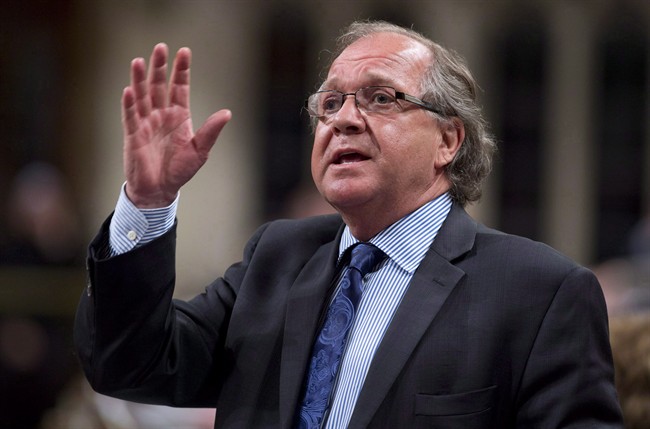OTTAWA, ON- Chief George Ginnish of Eel Ground First Nation has a blunt assessment of the roads in his community: “They’re the worst roads in New Brunswick.

“You’ve got cars that are weaving back and forth across the roads here to avoid pot holes,” he said.
“They have to avoid each other, then they have to avoid anybody that’s walking on the street.”
Some pot holes span entire streets, he said and in some places there are more asphalt patches than actual roadway. There are other sections where the roadbed is so badly eroded that in the spring it’s like driving on a sponge.
“There’s certain sections of the community you avoid like the plague,” Ginnish said.
The Eel Ground First Nation roads are typical of those on other reserves in New Brunswick.
The province knows its on-reserve roads are in bad shape. Earlier this year, provincial officials visited First Nations across New Brunswick to collect video footage and data about road conditions. Their findings are summarized in a May 27 briefing note to Aboriginal Affairs Minister Bernard Valcourt. The Canadian Press obtained a copy of the document under the Access to Information Act.
The province found 59 per cent of its on-reserve paved roads are in poor condition. Another 27 per cent are in fair condition and only 14 per cent are in good condition.
Unsurfaced roads on reserves are much worse. Ninety-two per cent are in poor condition, while eight per cent are in fair condition. None of the unpaved roads are in good condition.
New Brunswick considers it acceptable if no more than 20 per cent of its roads are in poor condition. “Therefore, the First Nation roads are well below the standard,” says the briefing note to Valcourt.
The province approached the federal government this spring with a proposal to repair and maintain on-reserve roads. It wasn’t cheap. New Brunswick said it would cost $68 million over the next 12 years to bring the roads up to provincial standards and keep them that way. That works out to $5.7 million a year — which does not include an estimated $1.7 million needed each year after the first 12 years.
Aboriginal Affairs balked at the cost.
“The capital funding required for this initiative is well beyond what has traditionally been allocated to road construction and maintenance in New Brunswick,” says the Valcourt briefing note.
“Although the five most recent years have seen an average of $2,895,303 invested in New Brunswick roads … the source of most of the funding is unstable (targeted First Nation infrastructure fund, emergency management). Funding the entire project from the region’s A-base funding would be challenging.”
The government uses the term A-base to describe permanent funding allocations, as opposed to special or temporary funding for specific reasons.
Aboriginal Affairs will provide $1 million from its 2014-15 First Nation infrastructure fund for road work on the Pabineau First Nation, the document added, with the province kicking in another $500,000.
Chief David Peter-Paul of the Pabineau First Nation wasn’t immediately available to comment.
Provincial officials likewise had little to say about the roads. Neither New Brunswick’s aboriginal affairs secretariat nor its Transportation Department would comment.
“Infrastructure maintenance in First Nations communities is entirely a federal responsibility,” provincial spokesman John Adam wrote in an email, “and it would be inappropriate for the province to comment on any briefing materials that may pertain to road work assessment and or long-term maintenance and upgrade plans that the government of Canada may wish to perform in the future.”
As of Monday afternoon, no one from the federal Aboriginal Affairs Department had provided answers to questions asked Friday morning.
How much infrastructure money the department actually has on hand is another matter.
Aboriginal Affairs shifted half a billion dollars budgeted for infrastructure over a six-year-period to try to cover shortfalls in education and social programs, according to a recently released document.
But the document adds that moving the money around has only put greater pressure on the department’s already strapped infrastructure program. Even with the reallocated money, it says Aboriginal Affairs’ social and education programs are still short.



Comments